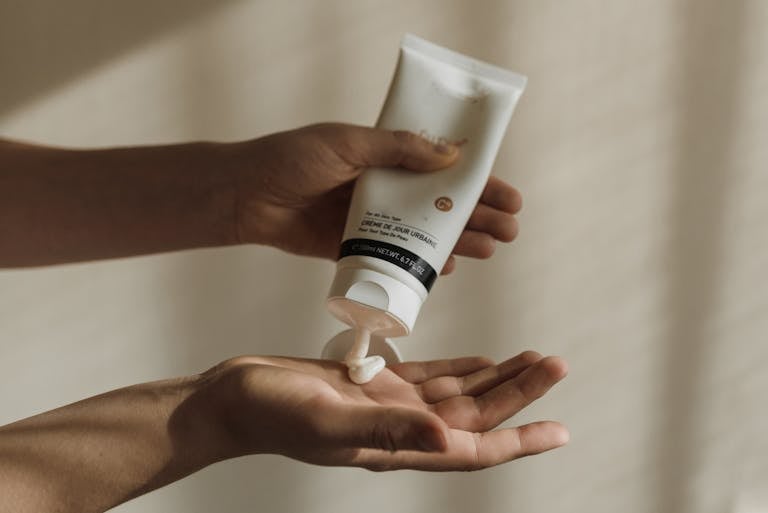It’s vital for you to understand skin pH and how it directly affects your skin’s health. Your skin has a natural barrier that relies on a balanced pH level, typically around 4.5 to 5.5. If this balance is disrupted, you may experience issues like dryness, irritation, or even more serious conditions such as eczema or acne. By knowing more about your skin’s pH, you can make informed choices about your skincare routine, ensuring your skin remains healthy, vibrant, and protected from harmful external aggressors.
The Biological Fundamentals of Skin pH
The Science of Acid-Base Balance
The skin’s pH level is a reflection of its acid-base balance, which plays a significant role in maintaining the integrity and function of your skin. The pH scale, ranging from 0 to 14, measures how acidic or basic a solution is, with values below 7 being acidic and above 7 being alkaline. Healthy skin is typically acidic, with a pH around 4.5 to 5.5, supporting the skin’s barrier function and antimicrobial properties. This acidic environment is vital as it helps to prevent the growth of harmful bacteria while promoting the growth of beneficial organisms, which keeps your skin healthy and resilient.
When the skin’s pH deviates from this ideal range, it can lead to various skin issues. An overly alkaline pH can disrupt the skin barrier, leading to dryness and irritation, while an excessively acidic pH can sometimes result in inflammation and an increased risk of infections. Understanding this delicate balance and maintaining it through appropriate skincare products can help you achieve and sustain optimal skin health.
The Role of the Skin Microbiome
The skin microbiome, which consists of trillions of microorganisms living on your skin’s surface, plays a central role in your skin’s pH balance. This complex community of bacteria, fungi, and viruses thrives in a specific acidic environment, contributing to the overall health of your skin. A balanced microbiome can enhance the skin’s barrier function and prevent the colonization of harmful pathogens. Studies have shown that a diverse microbiome can lead to lower skin pH levels, which are associated with healthier skin. Therefore, maintaining this balance is imperative for both your skin’s appearance and its resilience against environmental stressors.
Recent research has highlighted that alterations in the skin microbiome can affect your skin’s pH, particularly during conditions like eczema or acne. For instance, imbalances in this microbial community can lead to an increased presence of pathogens like Staphylococcus aureus, which has been linked to elevated skin pH and worsened skin conditions. By applying probiotic-rich skincare products or incorporating prebiotics into your diet, you can support the health of your skin microbiome and promote a more balanced skin pH, fostering an environment conducive to healing and protection.
The Unique pH Range of Healthy Skin
Alkaline vs. Acidic Skin: What’s Normal?
Your skin pH typically falls within the range of 4.5 to 5.5, making it mildly acidic. This acidity is imperative because it helps protect your skin from harmful bacteria and environmental pollutants while maintaining proper moisture levels. Skin that is too alkaline—usually above 7—can lead to dryness, irritation, and a compromised barrier, allowing unwanted elements to penetrate. Conversely, skin that is too acidic—below 4.5—can cause irritation, inflammation, and discomfort.
Maintaining your skin within this balanced pH range is critical for preserving your skin’s natural defenses. If your skin’s pH strays too far from its natural range, you’re likely to encounter various skin issues, from acne to eczema. A healthy skin pH is not just about looking good—it’s about ensuring your skin can function optimally as a protective barrier.
Factors That Affect Skin pH Levels
Numerous elements can influence your skin’s pH levels throughout the day. The most common factors include cleansers and skincare products. Many soaps and detergents have a higher alkaline pH that can disrupt your skin’s natural balance. Additionally, certain ingredients in your skincare routine—like alpha hydroxy acids or retinoids—can also alter your skin’s acidity levels, depending on their formulation. Hormonal fluctuations, lifestyle choices, and even dietary habits can contribute to this delicate balance.
Environmental factors also play a significant role in maintaining your skin’s pH. For instance, humidity levels, air pollution, and extreme temperatures can affect your skin’s barrier function, leading to variations in pH. Perceiving these changes and adjusting your skincare habits, as needed, can help stabilize your skin’s environment and promote overall health.
- Cleansers can significantly impact your skin’s pH.
- Hormonal fluctuations can cause changes in pH as well.
- Environmental factors like humidity affect skin pH.
- Dietary habits also influence your skin’s overall condition.
Adjusting your skincare routine based on these factors can be beneficial for maintaining your skin’s pH balance. Avoid harsh products, opt for pH-balanced cleansers, and consumption of a balanced diet rich in antioxidants can help your skin stay within its ideal pH range. You can also consider using moisturizers formulated to enhance your skin’s natural barrier and restore lost moisture. Perceiving the importance of these elements and making informed choices enables you to support your skin’s health effectively.
- pH-balanced cleansers are imperative for maintaining skin integrity.
- Moisturizers can restore lost moisture and support barrier function.
- Environmental pollutants should be minimized to protect your skin.
- Balanced diet aids in the overall health of your skin.
The Importance of Maintaining Optimal Skin pH
Skin Barrier Function and Its Implications
Maintaining an optimal skin pH is important for preserving the integrity of your skin barrier. This barrier, which consists of a mixture of cells, lipids, and proteins, acts as your body’s first line of defense against environmental aggressors, pathogens, and harmful substances. When your skin’s pH is balanced, typically between 4.5 and 5.5, the barrier functions efficiently, keeping moisture in and irritants out. Deviations from this range can disrupt the barrier, leading to problems like increased transepidermal water loss and skin sensitivity.
A disturbed skin barrier can manifest in various ways, including redness, flakiness, and a general feeling of tightness. Over time, these symptoms may escalate, leaving your skin vulnerable to infections or allergic reactions. Maintaining the skin’s optimal pH supports the natural production of lipid molecules that help retain moisture, ensuring your skin remains hydrated and healthy.
Link Between pH and Common Skin Conditions
Many common skin conditions are directly influenced by pH imbalances. For instance, conditions like acne often thrive in environments that are less acidic. A higher pH level can lead to an overgrowth of bacteria, further exacerbating breakouts. Similarly, dermatitis, particularly atopic dermatitis, is often associated with a compromised acid mantle. This condition can result in inflammation and discomfort, making it critical to restore and maintain a healthy pH.
Individuals suffering from conditions like rosacea may find that products with neutral or high pH levels can aggravate their symptoms, while those formulated within the acidic range tend to be more soothing. Proper management of skin pH not only aids in treating these conditions but also plays a preventive role in maintaining overall skin health.
Research has shown that when the skin’s pH is aligned with its natural acid mantle, you are less likely to experience flare-ups or irritation associated with eczema, psoriasis, and other inflammatory conditions. For example, a study published in the *Journal of Investigative Dermatology* demonstrated that restoring the skin’s pH with appropriate topical agents could significantly reduce symptoms of eczema in participants. This underscores the necessity of being mindful of the products you choose, opting for those that promote a healthy pH balance to sustain clear and vibrant skin.
How External Influences Impact Your Skin’s pH
The Impact of Skincare Products
Your choice of skincare products has a significant effect on your skin’s pH balance. Many conventional cleansers, toners, and exfoliants have a high alkaline content, which can strip your skin of its natural acidity. For instance, using harsh soaps may push your skin’s pH away from its optimal range, making it more susceptible to irritation and inflammation over time. On the other hand, products specifically formulated to maintain a pH-friendly environment—such as gentle, sulfate-free cleansers—can reinforce your skin’s protective barrier and promote a healthy microbiome.
Another aspect to consider is the use of active ingredients like AHA and BHA. While these exfoliants are beneficial for shedding dead skin, they typically lower your skin’s pH temporarily. Incorporating them into your routine strategically, rather than excessively, can help you enjoy their benefits without compromising your skin’s overall health. Pay attention to how your skin responds after each application, and adjust your routine accordingly.
Environmental Factors and Lifestyle Choices
External factors such as climate, pollution, and lifestyle habits can heavily influence your skin’s pH levels. For example, living in an urban area with high air pollution can lead to oxidative stress on your skin, triggering inflammation and potentially raising its pH. Similarly, exposure to harsh sun, wind, and temperature extremes can disrupt your skin’s barrier function, which is vital for maintaining a healthy pH. The combination of these elements may deplete your skin’s moisture, causing it to become more alkaline and less able to defend against bacteria and irritants.
Your daily habits also play a role in shaping your skin’s environment. Diets high in sugar and processed foods can create inflammation inside your body, which often reflects on the outside. In contrast, consuming foods rich in antioxidants, vitamins, and healthy fats can help maintain your skin’s natural acidity. Alcohol consumption and smoking further worsen the skin’s pH levels, leading to dryness and premature aging. Assume that making simple lifestyle adjustments can lead to notable improvements in your skin’s health and appearance.
- pH levels can be impacted by lifestyle choices.
- Daily habits, such as diet and pollution exposure, play roles in maintaining a healthy skin.
- Environmental factors such as sun and wind can disrupt skin’s barrier.
- Consider tailoring your routine to minimize these external influences.
Understanding how environmental factors and lifestyle choices interact with your skin can guide you in making more conscious decisions that enhance your overall skin vitality. Incorporating protective measures, like using broad-spectrum sunscreen and moisturizing regularly, can help cushion your skin against daily aggressors. Consider also introducing protective antioxidants in your skincare or diet to combat oxidative damage. Assume that being mindful of these influences will pave the way for maintaining balanced pH levels and healthier skin overall.
- Daily habits affect your overall skin condition.
- Diet choices can enhance or diminish your skin’s acidity.
- Environmental exposure can lead to oxidative stress.
- Protective measures can help maintain skin health.
Practical Tips for Monitoring Your Skin’s pH
Understanding your skin’s pH is key to unlocking its full potential. Incorporating simple techniques into your routine can help you keep tabs on this important aspect of your skin’s health. Here are some practical tips:
- Consider investing in a pH meter or pH test strips specifically designed for skin.
- Monitor your skin’s reaction after using new skincare products, especially those that are heavily acidic or alkaline.
- Pay attention to how your skin feels throughout the day, looking for signs of greasiness or dryness.
- Keep a log of any changes in your skin’s texture or appearance, linking them to possible changes in pH.
- Consult with a dermatologist if you notice persistent issues, as they can provide more comprehensive testing and analysis.
Knowing your skin’s pH can empower you to make informed choices about your skincare routine, ultimately leading to healthier, happier skin.
How to Test Your Skin’s pH at Home
Testing your skin’s pH at home is simpler than you might think. You can purchase pH test strips that are designed to work with skin, or you can use a thin piece of litmus paper. Start by cleansing your face gently, making sure to remove any makeup or dirt. Pat your skin dry and then place the test strip on your cheek or forehead for a few seconds. The color that appears on the strip will indicate whether your skin’s pH leans towards acidic, neutral, or alkaline.
Alternatively, you can use a commercially available pH meter for a more precise reading. These devices often come with instructions detailing how to use them effectively on skin. Keep in mind that skin can fluctuate in pH due to environmental factors, so consider conducting tests at different times for a more comprehensive overview.
Recognizing Signs of Imbalanced Skin pH
Imbalance in your skin’s pH can manifest in several noticeable ways. If your skin feels overly tight, becomes excessively oily, or develops redness and irritation, these may be telling signs that your pH levels are off. Individuals with compromised skin barriers might experience other symptoms as well, such as breakouts, itching, or flakiness.
Many people overlook these signs, attributing them to unrelated issues. If you find that your skin reacts negatively after using certain products or after exposure to environmental stressors, consider revisiting your skincare routine. It’s not uncommon to think that putting on more products might resolve the issue, but often, the solution lies in returning to a more balanced approach.
Recognizing these red flags early can save you from potential long-term skin issues, guiding you to make necessary adjustments. Incorporating a gentle cleanser, avoiding harsh treatments, or even changing your moisturizer can all help restore your skin’s delicate pH balance.
Strategies for Restoring and Maintaining Ideal Skin pH
Choosing the Right Skincare Products
Your skincare routine plays a pivotal role in maintaining a balanced skin pH. Opt for products specifically formulated to support the skin’s natural barrier. Look for cleansers that have a pH between 4.5 and 6.5, as these ensure effective cleansing without stripping moisture. Ingredients such as aloe vera, chamomile, and hyaluronic acid are known for their hydrating properties, which can help maintain your skin’s acidic environment. Avoid harsh ingredients like alcohol and sulfates, which can disrupt pH levels and lead to dryness and irritation.
Examine labels carefully for the presence of pH balanced formulas. If you’re inclined toward gentler options, consider products labeled as “pH-balanced” or those explicitly designed for sensitive skin. Incorporating toners with botanical extracts or mild exfoliants can also assist in maintaining optimal pH levels, ensuring your skin remains not just clean, but also healthy and vibrant.
Natural Remedies and Lifestyle Adjustments
Integrating natural remedies into your skincare regime can significantly enhance your skin’s pH balance. For instance, using diluted apple cider vinegar as a toner can help restore acidity to your skin. Additionally, honey is a natural humectant that draws moisture in, promoting hydration while maintaining a pH-friendly environment. Consuming more omega-3 fatty acids found in fish and flaxseeds supports skin barrier function from within, further stabilizing your skin’s pH.
Incorporating lifestyle changes also contributes to maintaining skin pH. Staying hydrated is key; drinking the recommended eight 8-ounce glasses of water daily helps keep your skin plump and resilient. Moreover, avoiding excessive sun exposure and wearing sunscreen can prevent the skin from becoming overly alkaline due to UV damage. Small dietary changes, such as reducing sugar intake and increasing fruits and vegetables, will not only benefit your skin but also enhance your overall health.
Balancing your skin’s pH isn’t merely about topical applications; it deeply connects to how you treat your body as a whole. Regular exercise promotes circulation, while stress-reducing activities such as yoga or meditation can lead to an overall healthier skin environment. Maintaining a balanced diet rich in antioxidants can also combat oxidative stress, which is a known disruptor of skin pH balance. Embracing a holistic approach enables your skin to thrive and maintain its ideal pH naturally.
The Future of Skincare: Innovations in pH Regulation
Emerging Technologies and Their Impacts
Innovations in skincare technology are paving the way for a deeper understanding of how pH regulation can enhance skin health. Devices like pH meters designed specifically for personal use are hitting the market, allowing you to test your skin’s acidity right at home. For example, a device that allows you to measure your skin’s pH can provide insights into why certain products work—or don’t—on your complexion. With access to real-time data, you can tailor your skincare regimen more effectively, leading to better outcomes and improved skin barrier function.
Another game changer is the development of pH-balanced formulas in skincare products. Brands are now harnessing biomimicry, creating cleansers and moisturizers that mirror the skin’s natural composition. This means you’re more likely to find products that maintain a healthy pH, thereby enhancing your skin’s resilience and longevity. With the rise of such innovations, maintaining balanced skin has never been more achievable and accessible.
The Role of Personalized Skincare Solutions
Personalized skincare solutions are transforming how you address individual skin concerns, especially in relation to pH. As technology advances, companies are utilizing artificial intelligence and big data to formulate products that cater specifically to your skin’s unique profile. For instance, some brands now offer skin analysis tools through smartphone apps that assess your skin type, hydration level, and even your environmental factors, creating a regimen with an optimal pH balance tailored just for you.
Moreover, personalized skincare allows you to choose products that not only address immediate concerns but also consider your long-term skin health. Brands such as Proven and SkinCeuticals have pioneered algorithms that analyze numerous skin parameters and genetic factors. They can then develop custom formulations that respect the natural pH of your skin, promoting a more effective and strategic approach to skin health.
Integrating personalized solutions into your skincare routine not only enhances effectiveness but also empowers you. This truly tailored approach ensures that what you put on your skin works in harmony with its natural state, helping you reach and maintain optimal pH levels while addressing specific issues such as acne, dryness, or sensitivity. By taking such a proactive stance, you not only enhance your beauty regimen but also invest in the long-term health of your skin.
To wrap up
Considering all points, understanding your skin’s pH is crucial for maintaining its health and appearance. Your skin’s pH impacts its barrier function and overall balance, influencing how well it can fend off pathogens and retain moisture. By choosing suitable skincare products that accommodate your skin’s pH, you can enhance its natural defenses and promote a vibrant, youthful complexion. Regularly assessing your skin type and its pH levels empowers you to take informed steps toward achieving optimal skin health.
Incorporating pH-awareness into your skincare routine is not just about using the right products; it’s about creating a holistic approach to skincare that considers your unique skin chemistry. From cleansers to moisturizers, ensuring that your regimen aligns with your skin’s natural levels can lead to long-lasting positive effects. By taking the time to educate yourself on skin pH and applying that knowledge, you will likely notice an improvement in your skin’s resilience and overall well-being.







